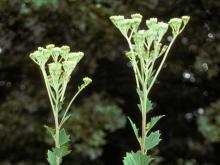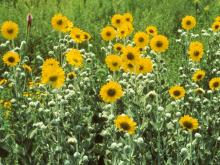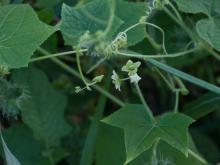Wildflowers, Grasses and Other Nonwoody Plants
Media

Species Types
Scientific Name
Arnoglossum atriplicifolium (also Cacalia atriplicifolia)
Description
The stout, smooth leaves of pale Indian plantain, with their glaucous-white coating beneath, look almost artificial. They are irregularly shaped, with pointed lobes. At the base of the plant, they can be 6 inches wide. They become gradually smaller up the stem.
Media

Species Types
Scientific Name
Agalinis tenuifolia (formerly Gerardia tenuifolia)
Description
Slender false foxglove, or common gerardia, is a small, showy wildflower with slender, opposite leaves and thin, wiry, branching stems. The small, funnel-shaped blossoms are pink or purple, with an upper lip that arches over the 4 hairy stamens.
Media

Species Types
Scientific Name
Carex, Schoenoplectus, Scirpus, and other genera
Description
Missouri has more than 200 species in the sedge family. Distinguishing between these grasslike plants can be difficult, but it’s easy to learn some basics about the group.
Media

Species Types
Scientific Name
Helianthus spp.
Description
Most people recognize sunflowers when they see them, with their bright yellow ray flowers and rather flattened center of dark disk flowers. There are 16 species of Helianthus in Missouri.
Media

Species Types
Scientific Name
Sicyos angulatus
Description
Bur cucumber is a nonwoody, native, annual vine common in low, moist soils. It can spread across an area 20 feet wide, covering the ground and nearby shrubs. Note its lobed, gourd-family leaves, curly green tendrils, clusters of prickly, green, oval fruits, and 5-lobed, cream-colored flowers.
Media

Species Types
Scientific Name
Symphyotrichum spp. (formerly Aster spp.)
Description
Missouri has 24 species of New World asters in genus Symphyotrichum. Most have purple or white ray flowers and yellow disk flowers that turn reddish over time. Most bloom in late summer and fall.
Media

Species Types
Scientific Name
Cuscuta spp.
Description
Dodders are easy to identify, even though at first you might not recognize them as plants. These parasitic plants usually look like a hairlike mass of yellow or orange, leafless, wiry, vining stems wrapping around the stems of other plants.
Media

Species Types
Scientific Name
Viola spp.
Description
Violets, as a group, are fairly easy to identify, with their colorful five-petaled “faces” so welcome in springtime. Missouri has 17 species, and some are confusingly similar. This page introduces them as a group.
Media

Species Types
Scientific Name
Viola striata
Description
Pale violet, or cream violet, is Missouri’s only white-flowering violet that produces true aboveground stems. It is scattered to common in the Ozarks, Ozark border, and Bootheel lowlands and uncommon or absent elsewhere in the state.
Media

Species Types
Scientific Name
Packera spp. (formerly Senecio spp.)
Description
Ragworts, or groundsels, have several common names, and separating the different species can be a little tricky. But members of genus Packera, with their bright yellow daisy-like flowers, are distinctive as a group. Seven species have been recorded in Missouri.
See Also
About Wildflowers, Grasses and Other Nonwoody Plants in Missouri
A very simple way of thinking about the green world is to divide the vascular plants into two groups: woody and nonwoody (or herbaceous). But this is an artificial division; many plant families include some species that are woody and some that are not. The diversity of nonwoody vascular plants is staggering! Think of all the ferns, grasses, sedges, lilies, peas, sunflowers, nightshades, milkweeds, mustards, mints, and mallows — weeds and wildflowers — and many more!





















